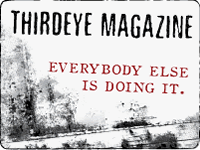To some, the technological prowess of our culture is seen as the ultimate destructive mechanization – responsible for everything from our current global ecological crisis to the general feelings of isolation and loneliness afflicting the modern world.
But is this necessarily the case?
Enter Mark Plotkin, founder of the Amazon Conservation Team (ACT). Plotkin is a renowned ethno-botanist and author with a passion for preserving the shamanic and pharmacological knowledge of indigenous people. He’s spent the past 20 years living among the most isolated tribes on the planet. Today, he’s spearheading a comprehensive rainforest mapping initiative that teaches Amazonian Indians to use Google Earth, Global Positioning System (GPS) mapping, and computers in order to prevent their land and culture from being lost forever.
PRESERVING BIODIVERSITY
The Amazon is under constant threat from loggers, miners, farmers, and bio-prospectors out to make a buck off the newest miracle cure. Equally threatened are its human inhabitants who depend on the forest for their livelihood. But now, thanks to ACT and the help of local governments, Amazonian Indians can be seen clad in their traditional garb toting GPS units or accessing Google Earth on laptops to monitor deforestation and report illegal mining.
Since the early 1990’s, tens of thousands of informal gold miners have descended on the region like ants on honey, often sneaking illegally onto Indian reserves and national parks. These mines have wreaked havoc on the rainforest ecosystem – causing deforestation, mercury pollution, and sedimentation of rivers. Historically, such small-scale mining has been almost impossible to detect and prevent. That’s where Google Earth’s high resolution imagery comes in.
“Google Earth is used primarily for vigilance,” said Vasco van Roosmalen, ACT’s Brazil program director. “Indians log on to Google Earth and study images, inch by inch, looking to see where new goldmines are popping up or where invasions are occurring. They are able to use these images to find even the smallest gold mine.”
Once the Indians’ suspicions are piqued, they note the coordinates of a disturbance and go on foot patrol with government officials to investigate further. Plotkin feels the best shot at preserving the Amazon comes from empowering the indigenous people who live there.
“It’s our strong belief that the people who best know, use and protect biodiversity are the indigenous people who live in these forests,” he said.
SECURING LAND RIGHTS
Besides preventing environmental destruction, ACT is also helping Indians generate maps to document their land use, which helps prevent its acquisition by developers. By using GPS units to record the locations of materials for houses, supplies for building canoes, food, and any other geographical areas essential to survival, they are able to generate meticulously detailed maps. These maps help illustrate to politicians and business men why so few Indians need so much land, thereby cementing their claims to it.
The program’s largest success is the mapping of ten million acres in the Tumucumaque Indigenous Park and the Rio Paru d’Este Indigenous Land – a territory the size of the Netherlands. The Tumucumaque map has 2,000 indigenous place names that had never been recorded, and each of those names is a story tied to the land.
“When we did one of the first mapping projects,” said Plotkin, “Indians went into villages and forests to get the names of the places. When they returned, they said it was taking longer than expected because the elders spent half an hour telling them the story behind the name, before they revealed the name.”
Pages: 1 2





No Comments so far ↓
There are no comments yet...Kick things off by filling out the form below.